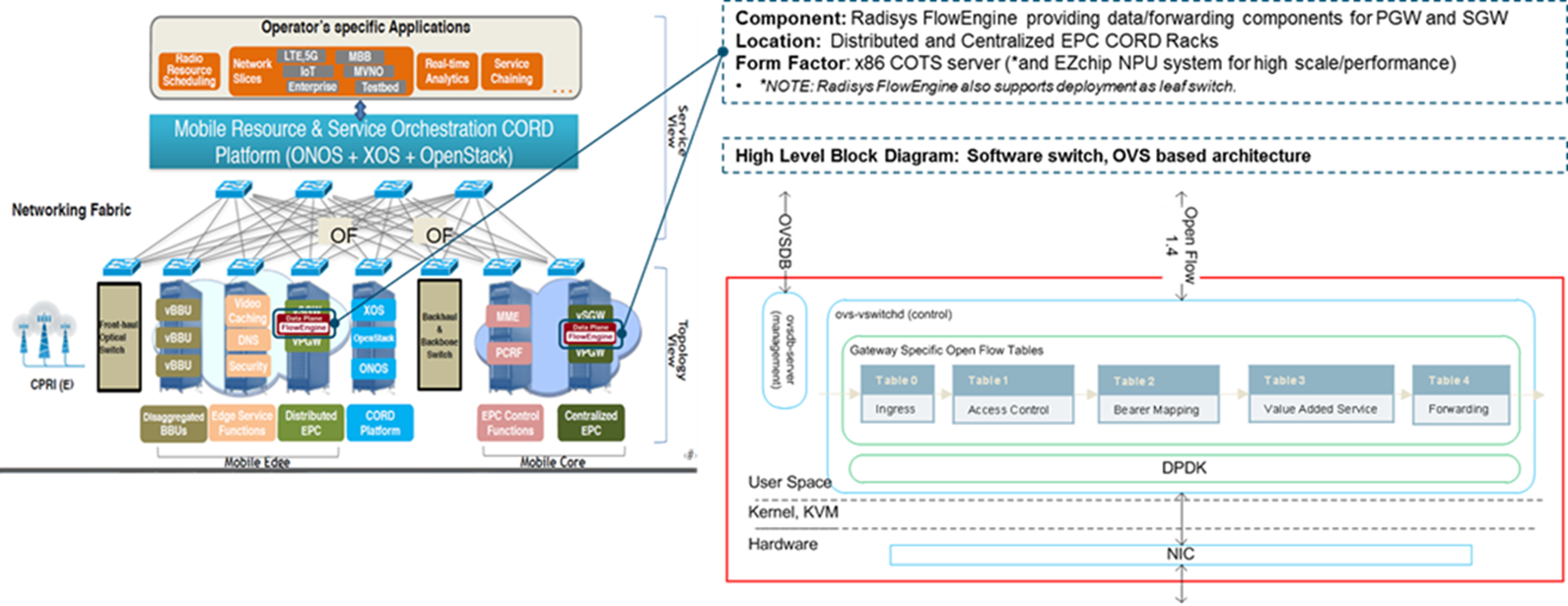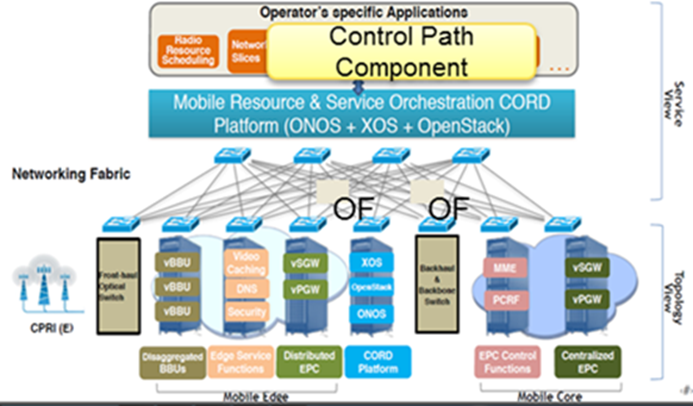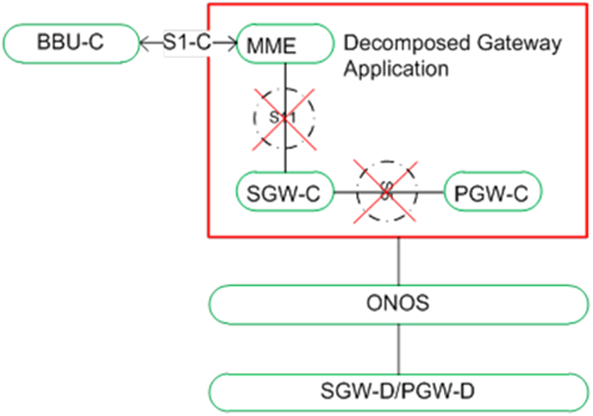Radisys is privileged to be part of Mobility CORD (M-CORD), a progressive initiative to bring service functionality and distributed EPC (LTE) to the mobile edge under the framework of CORD. One substantial element of the M-CORD program, that Radisys will be contributing is the EPC packet gateway (PGW) decomposition/segmentation.
Integrating SDN principle into the LTE packet/serving gateway offer these inherent benefits:
- Consolidation of the signaling overhead
- Reduction of latency by enabling offload and caching functions
- Improvement in service introduction and creation (by incorporating open-approach like OpenFlow tables to handle new data services)
- Independent scale-out of data/forwarding plane and control/signaling plane
The segmented PGW architecture will present these underlying principles:
- Functional split between signaling and control plane (S5/S8 GTPc, S11) and data plane (S5/S8 GTPu).
- Independent scale-out of data and control plane
- Leveraging OpenFlow and SDN Orchestrator to add individual bearer flows in PGW data plane.
Program Contribution and Definition
Under the segmented PGW key principles, two key areas that Radisys will be cultivating in collaboration with ON.Lab are:
1) Segmented Gateway: Data Path Component (see figure 1)
- Interface: GTPu part of S5/S8 interface and SGi interface.
- Data/forwarding components for PGW and SGW:
- Support PGW and SGW data path function, scalable for millions of UEs/devices such as tunneling/de-tunneling, Bearer mapping, LTE QoS, Deep Packet Inspection, etc.
- Control Interface: Compliant to Open Flow 1.4 and extensions to support SP use case.
- Management Interface: OVSDB based interface
- OpenFlow Integration: Flexible definition of gateway function in terms of OF table sequence.
- Ingress table is responsible for sending signaling plane messages to Signaling application via OF PACKET_IN option. It also identifies whether packet is upstream or downstream and saves direction in metadata.
- Bearer mapping table performs gateway core function
- de-tunneling (upstream), tunneling (downstream) packets. Rely on OF extension to support GTP tunnels.
- For downstream packets, map it to bearer based on Service Data Flow (SDF) and traffic flow template (TFT).
- Metering (not in PoC) and Charging
- Value added service is a placeholder for specific function that can be part of data plane like lawful intercept, NAT, flow redirection for DPI.
- Form Factor: Leverage DPDK on x86 (*and EZchip NPU system for high throughput/scale requirement)
Figure 1: Segmented Gateway: Data Path Component
2) Segmented Gateway: Control Path Component (see figure 2)
The work for segmentation in the control path component is still evolving; nevertheless, the area that needs to be addressed and observed initially is in optimizing the LTE signaling overhead. The main reason is that for high rate of transactions such as IoT, the scale-out requirement for LTE core signaling between eNB to MME and MME to SGW during idle to active transition will not be practical. WE will work actively w/ ON.Lab and the relevant collaborators/partners to advance the integration and development work as part of our contribution to the M-CORD project.
Figure 2: Segmented Gateway: Control Path Component
One first approach is to make eNB to SGW bearer connection permanent, which is defined as no tear down during UE idle state transition. This approach requires:
- Optimization of standard LTE interfaces S11, S1-C, S5-C and S8-C.
- SGW-D to keep the bearer information so during idle state transition, SGW-C (and BBU-c) will not be asked to delete its S1-U bearer.
- Integration w/ SDN Controller can utilize the OF flow timeout mechanism to tune when bearer gets deleted in SGW-D
- When UE goes to active state and established RRC connection, no core signaling is needed to modify bearer in SGW-D.
- Form Factor: All of MME, SGW-C and PGW-C can be part of a VM with S11, S5-C/S8-C replaced by internal interface.


